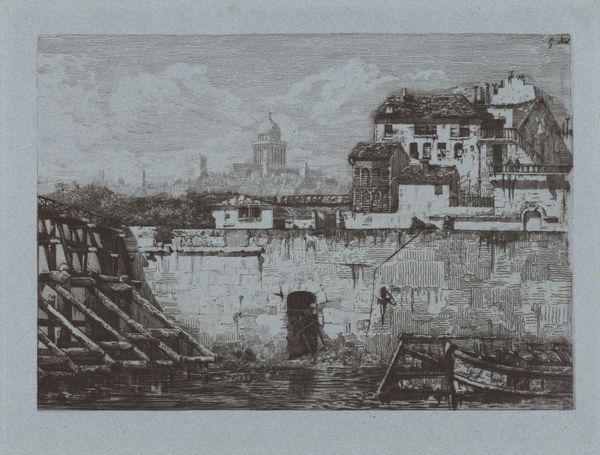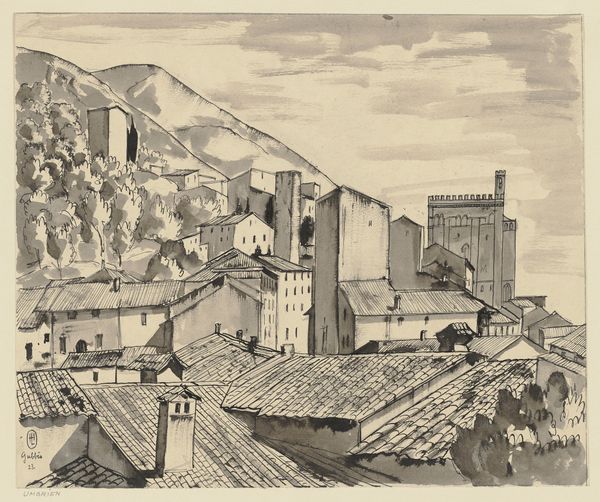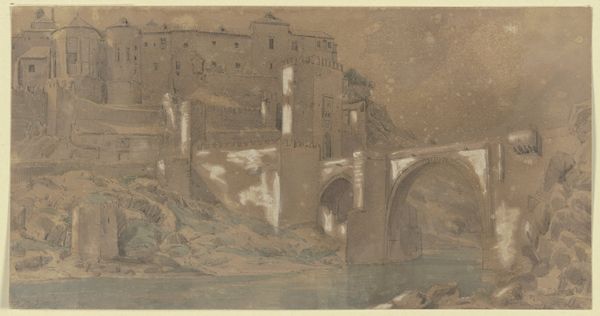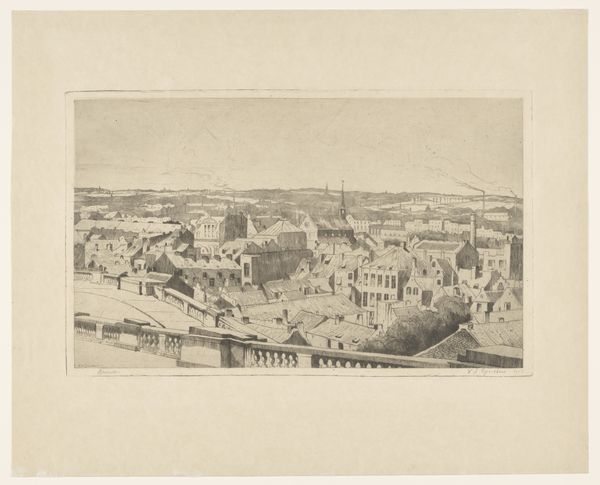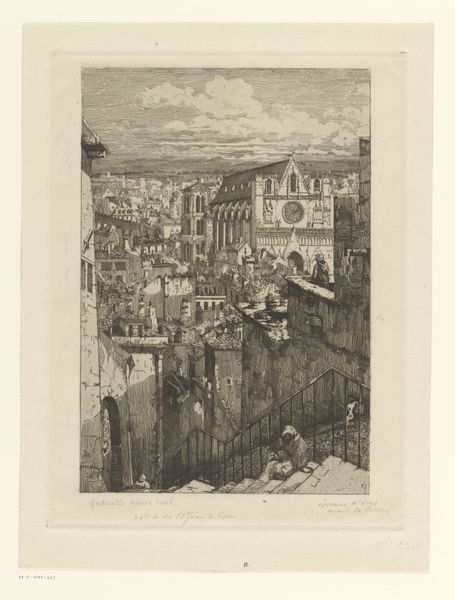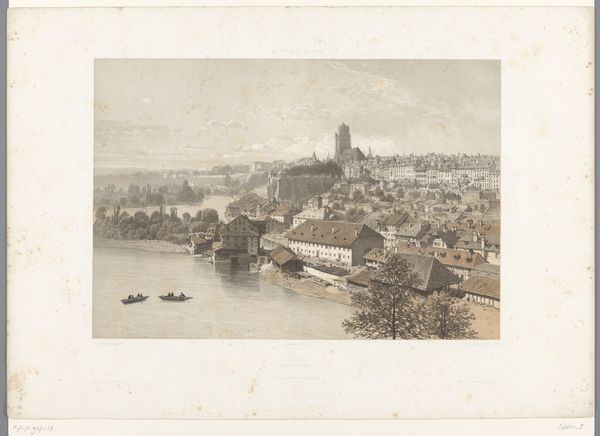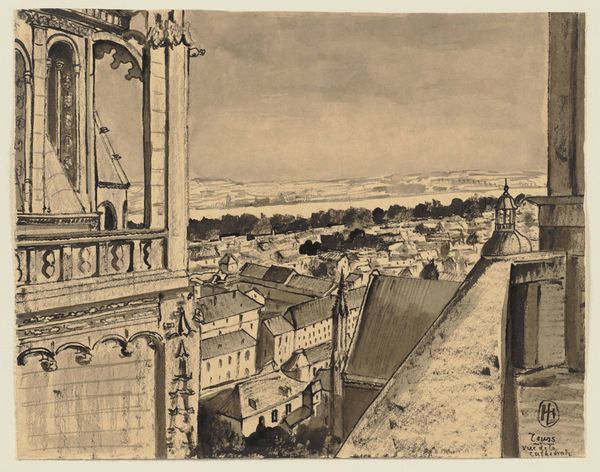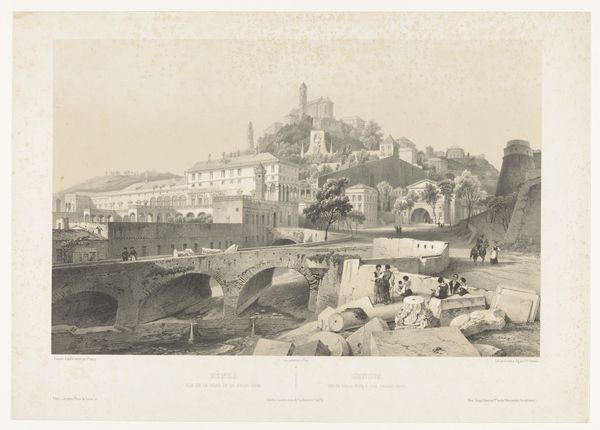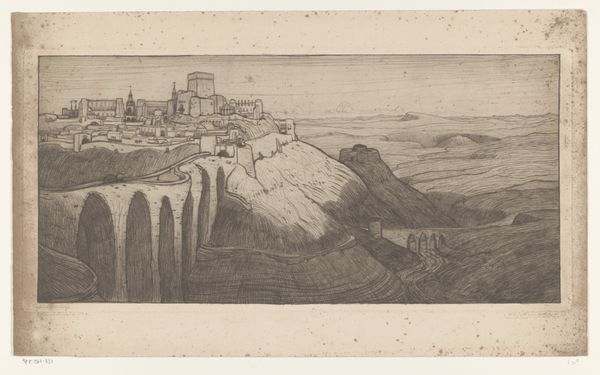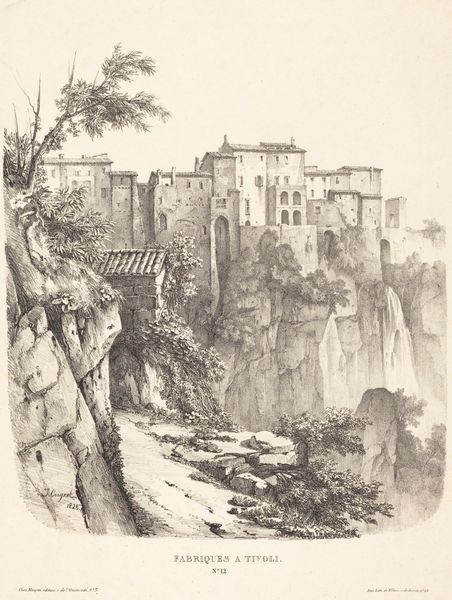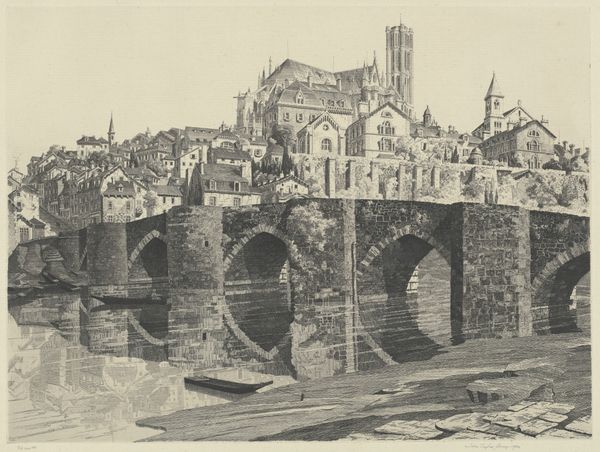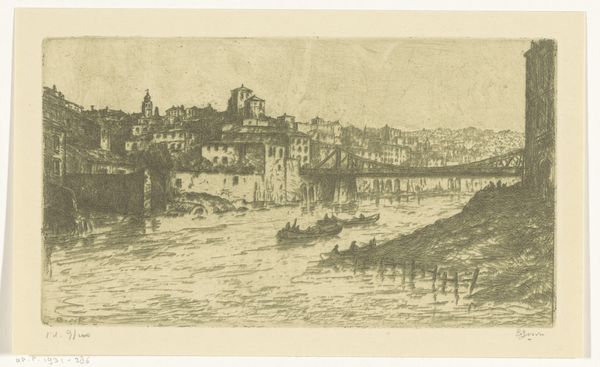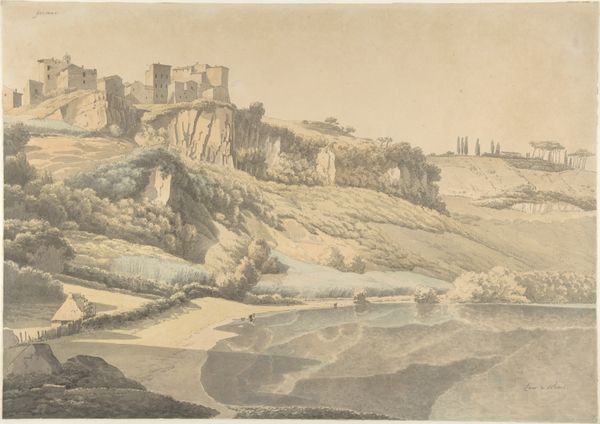
drawing, paper, ink
#
drawing
#
landscape
#
paper
#
ink
Copyright: Public Domain
Curator: This is Hermann Lismann's ink drawing "View from Chinon Castle onto the Vienne." You'll notice the details created simply through tonal variations and line work. Editor: Immediately, it’s the sheer drama of the tower, like a giant about to tumble forward, that seizes you. Moody skies…you can almost feel the chill of the stone. Curator: Precisely, and such imposing architecture had symbolic value beyond aesthetics. Castles represented concentrated power, a display of social stratification rendered visible for even the peasantry. The positioning of the Church in proximity further solidified dominance. Editor: Yet it feels so personal too. See how the details of those buildings just spill down towards the river? Each house, the implication of lives lived there…the power structure becomes a human landscape, if that makes any sense. I almost feel vertigo looking down that slope. Curator: Absolutely. Lismann presents a topographical view that served strategic purposes in previous eras of depicting military positions or urban landscapes while equally capturing a specific atmosphere. The use of paper and ink facilitates the study of topography within landscape art. Editor: Right! And the artist seems less interested in idealizing it, you know? More interested in… well, what time does to places, how it softens them, how even stone succumbs, and everything slowly descends, figuratively and maybe literally, to the river. Curator: It makes you think of all the power struggles fought in places just like this, struggles over resources, land rights and how, in modernity, such locations are reborn as monuments for heritage preservation, often with their past obscured. Editor: I agree that we look back from the modern vantage, but maybe that raw beauty is actually a sign, etched right into the landscape, that nothing, especially hubris, lasts forever. It kind of makes me want to paint the relentless march of water. Curator: Well, it leaves me pondering how the picturesque imagery served to sanitize the political realities these structures represent. Editor: Still, maybe looking for the soft parts and edges and that endless water keeps us human as we stand and think in its shadow.
Comments
No comments
Be the first to comment and join the conversation on the ultimate creative platform.
